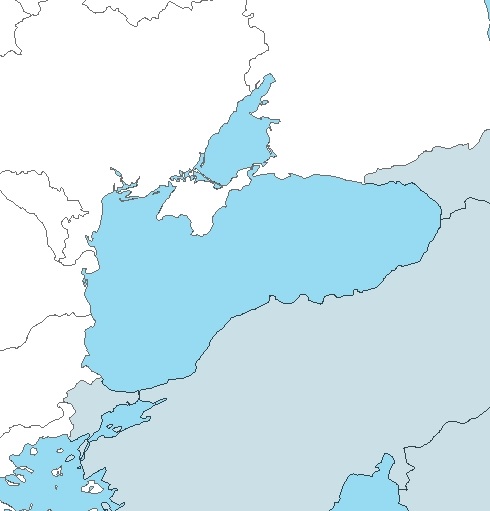
Case Study: Black Sea Turbot
Objective: Restoring the Western stock of Black Sea turbot to productive levels through an Ecosystem Approach to Fisheries Management.
Management Problem
The Black Sea turbot (Psetta maxima maeotica) is a highly valuable commercial species, which has been subjected severe decline in recent decades. The main reasons for the decline appears to be overfishing, in particular due to Illegal, Unreported, and Unregulated (IUU) fishing, but the stock development has also been adversely affected by environmental change (including eutrophication and invasive species). Recent assessments of the turbot stock have been based on different assumptions about stock structure but reach similar conclusions, namely that the stock is subjected to highly unstainable fishing pressure and is in need of a recovery plan. The case study will benefit from, and ideally contribute to, an ongoing GFCM initiative to develop a management plan for the Black Sea turbot (GFCM, 2014)1.
Management Setting
The case study will be based on the assumption that the western stock of Turbot can regarded separate stock, fished by Ukraine, Bulgaria and Romania2. Although the evidence in support of this assumption is not conclusive, expert believe that it more likely than the assumption that there is a common turbot stock for the whole Black sea, which has been the basis for most stock assessment in the past.
Currently, there is no established agreement on the management of fisheries in the Black Sea3. However, the General Fisheries Commission for the Mediterranean is a highly important body for cooperation and coordination with regard to fisheries management. Romania and Bulgaria are members of the GCFM, which has authority to adopt binding measures for its members. Ukraine’s is not a full member of GFCM but its affiliation with the Commission has recently been strengthened and formalized as a “Cooperating non-Contracting Party”. Bulgaria, Romania and Ukraine participates in an ongoing GFCM initiative to develop a common management plan for Black Sea turbot1.
More information on the management setting for Black Sea turbot can be found recent GCFM background report4.
Objectives
The case study associates itself with the ongoing GFCM initiative for to develop a management plan for common for Black. The objective and operational objectives for the case study (see below) are therefore obtained from this initiative, although they may be revised and made more explicit later in consultation with stakeholders and case study researchers.
| Objectives and candidate operational objectives for the Black Sea turbot management plan initiative of the GFCM. Source (GFCM, 20141). |
| Objective |
|---|
| To counteract direct and indirect overfishing in order to ensure the sustainable economic viability of fisheries |
| To restore, to the extent possible, the size of Black Sea turbot stocks at least MSY levels |
| To guarantee a low risk for stocks of the associated species to fall outside safe biological limits |
| To reduce the extent of IUU fishing on turbot |
| To ensure the protection of biodiversity in order to avoid undermining ecosystems structure and functioning |
Case study approach
Stakeholders are cooperating with Mareframe researchers propose a management plan. The process includes the following steps:
- Identify management problem(s)
- Identify objectives and indicators
- Implement models
- Develop management alternatives
- Evaluate alternatives (decision support)
- Select best alternative
- Draft management proposal
- ^a ^b ^c GFCM 2014. Report of the Workshop to test the feasibility of implementing multiannual management plans in the Black Sea. Available at: http://www.fao.org/3/a-ax827e.pdf
- ^Shlyakhov, V., 2014 - Fisheries and biological information and the stock assessment of turbot Psetta maxima maeotica (Pallas) in Ukrainian waters of the Black Sea, Труды ЮгНИРО, Т. 52, 2014 ISSN 1026-5643. Труды ЮгНИРО, Т. 52: 24-43
- ^Duzgunes, E., and Erdogan, N. 2008. Fisheries Management in the Black Sea Countries. Turkish Journal of Fisheries and Aquatic Sciences, 8: 181-192.
- ^Anon 2014. Background Technical Document in Support of the Management Plan for turbot fisheries in the Black Sea (GSA 29). GCFM background report.

